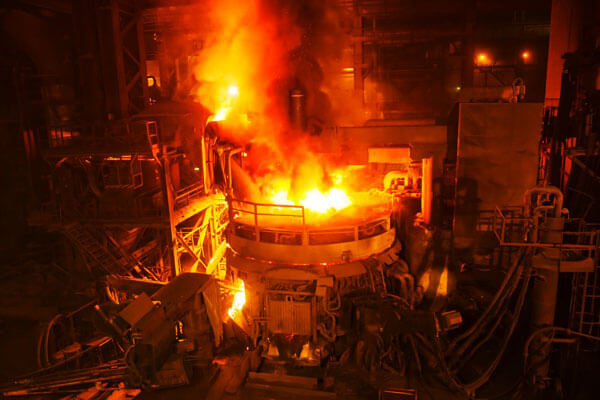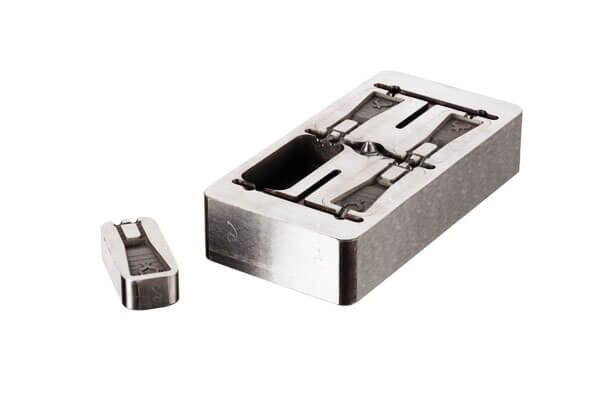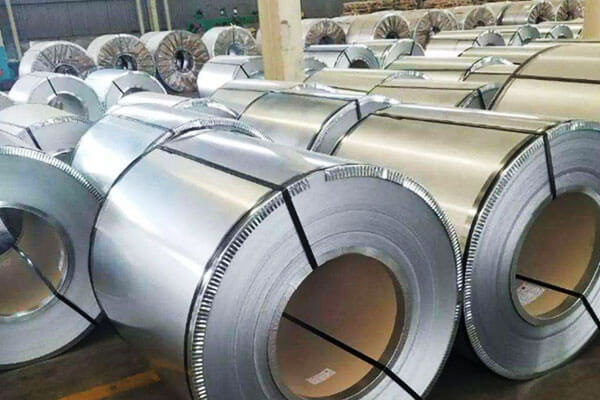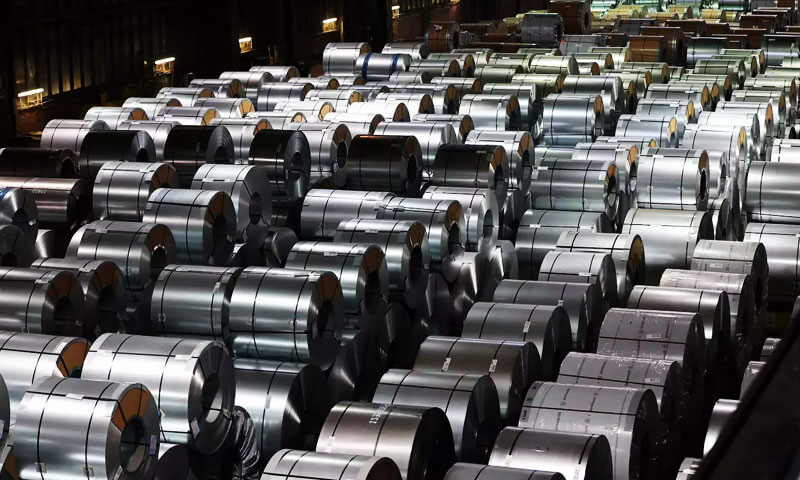Pengenalan
Dalam 1889, di Pameran Dunia Paris, Struktur keluli yang menjulang tinggi yang mengejutkan dunia -Menara Eiffel.
Terdiri daripada 18,038 Komponen besi tempa, Kejuruteraan Kejuruteraan ini bukan sahaja melambangkan puncak inovasi struktur tetapi juga menandakan kemasukan rasmi manusia ke zaman keluli.
Dari rangka pencakar langit ke komponen peranti perubatan yang rumit, Keluli telah meresap setiap aspek tamadun moden dengan peranannya yang tidak dapat digantikan.
Melebihi membentuk pembangunan perindustrian, Ia telah menjadi daya penggerak di sebalik pengembangan infrastruktur global dan kemajuan teknologi.
Artikel ini menyelidiki sifat saintifik keluli, teknik pembuatannya, Evolusi Perindustrian, dan trend masa depan,
mendedahkan bagaimana bahan penting ini terus menentukan sempadan tamadun manusia.
1. Kajian sejarah keluli
Penerokaan manusia keluli bermula dari 1800 BCE di Anatolia, Tetapi revolusi perindustrian yang benar bermula pada abad ke -19.
Dalam 1856, Henry Bessemer mencipta Penukar Bessemer, yang meningkatkan kecekapan pengeluaran keluli dua puluh,
secara langsung mempercepatkan perkembangan keretapi yang pesat, Pembuatan kapal, dan kejuruteraan mekanikal.
Menjelang abad ke -20, penggunaan yang meluas Teknologi Pemutus Berterusan Kecekapan pengeluaran yang lebih baik, mengurangkan sisa bahan, dan kualiti produk yang dipertingkatkan.
Pada abad ke -21, Industri keluli global telah menjalani transformasi yang ketara.
China telah muncul sebagai kekuatan dominan, perakaunan 53.9% pengeluaran keluli kasar global di 2023.
Pada masa yang sama, Mengetatkan peraturan alam sekitar dan matlamat berkecuali karbon mendorong industri ke arah pembuatan karbon rendah dan pintar.
Kajian semula sejarah pembangunan Steel menunjukkan bahawa setiap kejayaan teknologi telah meluaskan aplikasinya secara dramatik,
Membenarkan keluli menembusi pembinaan tradisional ke dalam aeroangkasa, Peranti perubatan, dan sektor tenaga boleh diperbaharui.
2. Proses pembuatan keluli
Pengeluaran Keluli Moden adalah sistem perindustrian yang sangat canggih yang mengintegrasikan sains bahan, ketepatan kejuruteraan, dan kelestarian alam sekitar.
Tahap terasnya termasuk pemilihan bahan mentah, peleburan, penapisan, dan membentuk, serta amalan ekonomi yang mampan dan bulat.
Bahan mentah & Pengekstrakan
Kualiti bijih besi, Coking Coal, dan elemen aloi menentukan sifat akhir keluli.
Contohnya, kemelut tinggi bijih besi dengan tinggi Kandungan Fe dengan ketara mengurangkan kekotoran, meningkatkan kekuatan mekanikal dan rintangan kakisan.
Sehingga 2024, Pengeluaran bijih besi global telah mencapai 2.2 bilion tan, dengan pengagihan sumber
dan kos pengekstrakan memainkan peranan penting dalam membentuk landskap kompetitif industri keluli.
Pembuatan besi & Proses pembuatan keluli
Pengeluaran keluli moden terutamanya bergantung pada relau letupan (Bf), langsung dikurangkan besi (DRI), dan relau oksigen asas (Bof).
Teknologi DRI telah menjadi kaedah penting untuk pengeluaran keluli hijau, kerana ia mengurangkan pelepasan karbon oleh 30% berbanding dengan relau letupan tradisional.
Selain itu, relau arka elektrik (EAF), yang menggunakan keluli sekerap kitar semula, mempunyai meningkatkan bahagian pengeluaran global mereka ke 28%,
menurunkan penggunaan tenaga dengan ketara dan menyumbang kepada model pengeluaran yang lebih mampan.

Penapisan & Membentuk
Setelah keluli cair mengalami penapisan sekunder, ia diproses melalui Pemutus dan Rolling Berterusan untuk menghasilkan bahan ketepatan tinggi
seperti lembaran keluli tahan karat ultra tipis dan keluli kekuatan tinggi aeroangkasa.
Teknik Kawalan Penyejukan Lanjutan Meningkatkan Struktur Biji dan Rintangan Keletihan, menjadikan produk keluli lebih sesuai untuk persekitaran yang melampau.
Kemampanan & Ekonomi Pekeliling
Kitar semula keluli adalah asas kemampanan industri moden.
Setiap Ton keluli kitar semula menghalang pelepasan kira -kira 1.5 tan Co₂, mengurangkan jejak karbon industri dengan ketara.
Pada masa ini, The Kadar kitar semula keluli global telah mencapai 85%, mengukuhkan peralihan ke arah pengeluaran keluli yang lebih hijau dan lebih cekap.
3. Mengklasifikasikan keluli: Jenis dan ciri unik mereka
Keluli berdiri sebagai salah satu bahan paling serba boleh dalam kejuruteraan moden, dan kebolehsuaiannya yang tidak berkesudahan berpunca dari kawalan yang tepat ke atas komposisi kimianya.
Dengan mengubah kandungan karbon dan menambahkan elemen pengaliran yang berbeza, Pengilang membuat keluli dengan sifat unik yang disesuaikan untuk aplikasi tertentu.
Keluli karbon
Keluli karbon berfungsi sebagai asas bagi aplikasi yang tidak terkira banyaknya kerana keseimbangan kekuatan dan kemulurannya.
Sifatnya terutamanya bergantung pada kandungan karbon, yang biasanya berkisar dari 0.05% ke 2.0%.

Keluli rendah karbon (Keluli ringan):
- Ciri -ciri: Mengandungi kurang daripada 0.3% Karbon, menjadikannya sangat lembut, mudah dibentuk, dan boleh dikimpal.
- Aplikasi: Digunakan secara meluas dalam badan automotif, rasuk struktur, dan barang pengguna di mana kekuatan tinggi bukanlah kebimbangan utama.
- Titik data: Keluli karbon rendah sering mempamerkan kekuatan hasil sekitar 250-350 MPa,
menjadikannya sesuai untuk aplikasi di mana kekuatan sederhana dan kebolehbagaian yang sangat baik diperlukan.
Keluli Medium-Carbon:
- Ciri -ciri: Dengan kandungan karbon antara 0.3% dan 0.6%, Keluli ini menawarkan profil kekuatan yang dipertingkatkan dan rintangan haus yang lebih baik, Walaupun kemulurannya berkurang.
- Aplikasi: Sering digunakan untuk komponen automotif seperti gear dan aci, serta dalam pembuatan trek kereta api.
- Titik data: Kekuatan tegangan biasa berkisar antara 400-600 MPa, memberikan keseimbangan antara kekuatan dan kemuluran.
Keluli karbon tinggi:
- Ciri -ciri: Mengandungi antara 0.6% dan 2.0% Karbon, mengakibatkan peningkatan kekerasan dan rintangan haus, Walaupun ia mengorbankan kemuluran.
- Aplikasi: Sesuai untuk memotong alat, mata air, dan wayar kekuatan tinggi, di mana ketahanan di bawah tekanan adalah kritikal.
- Titik data: Keluli karbon tinggi dapat mencapai kekuatan tegangan 800 MPA selepas rawatan haba yang sesuai, menjadikan mereka sesuai untuk aplikasi tugas berat.
Keluli aloi
Keluli aloi Meningkatkan sifat asas keluli karbon dengan menambahkan unsur -unsur seperti mangan, Chromium, nikel, dan Molybdenum.
Penyesuaian ini membolehkan atribut prestasi yang disesuaikan seperti peningkatan ketangguhan, rintangan haba, dan rintangan kakisan.

Keluli rendah aloi:
- Ciri -ciri: Biasanya termasuk peratusan kecil (hingga 5%) elemen aloi yang meningkatkan kekuatan tanpa kerugian besar dalam kemuluran.
- Aplikasi: Digunakan dalam aplikasi struktur, saluran paip, dan bahagian automotif di mana kekuatan tinggi dan ketangguhan sederhana diperlukan.
Keluli aloi tinggi:
- Ciri -ciri: Menggabungkan bahagian pengaliran yang lebih tinggi untuk menyampaikan prestasi unggul,
termasuk rintangan haus yang dipertingkatkan dan keupayaan untuk menahan suhu yang melampau. - Aplikasi: Biasa di sektor penjanaan aeroangkasa dan kuasa, di mana bahan mesti menahan persekitaran yang keras.
- Titik data: Keluli aloi tinggi tertentu mempamerkan kekuatan hasil melebihi 600 MPA dan direkayasa untuk menentang ubah bentuk walaupun pada suhu melebihi 600 ° C.
Keluli tahan karat
Keluli tahan karat membezakan dirinya dengan rintangan kakisan yang sangat baik, dicapai dengan menggabungkan sekurang -kurangnya 10.5% kromium ke dalam aloi.
Kromium membentuk lapisan pasif kromium oksida di permukaan, Melindungi bahan dari karat dan kemerosotan alam sekitar.

Keluli tahan karat austenit:
- Ciri -ciri: Bukan magnet, sangat tahan terhadap kakisan, dan terkenal dengan kebolehbagaian dan kebolehkalasannya yang sangat baik.
- Aplikasi: Digunakan secara meluas di peralatan dapur, peralatan pemprosesan kimia, dan peranti perubatan.
- Titik data: Gred seperti 304 dan 316 Keluli tahan karat kerap menunjukkan kekuatan tegangan dalam lingkungan 500-750 MPa,
Digabungkan dengan rintangan kakisan yang luar biasa dalam persekitaran yang pelbagai.
Keluli tahan karat martensit:
- Ciri -ciri: Menawarkan kekerasan dan kekuatan yang lebih tinggi berbanding dengan jenis austenit, walaupun ia kurang tahan kakisan dan lebih sukar untuk dikimpal.
- Aplikasi: Biasanya dijumpai dalam alat pemotong, instrumen pembedahan, dan persekitaran yang dipakai tinggi.
- Titik data: Nilai kekerasan biasa dapat mencapai sehingga 600 HRC selepas rawatan haba, menjadikan mereka sesuai untuk aplikasi berprestasi tinggi.
Keluli tahan karat Ferritic:
- Ciri -ciri: Magnet dan kurang mulur daripada keluli tahan karat austenit tetapi menawarkan rintangan yang baik terhadap retak kakisan tekanan.
- Aplikasi: Digunakan dalam sistem ekzos automotif dan peralatan perindustrian yang memerlukan kekuatan sederhana dengan rintangan kakisan yang baik.
Keluli tahan karat dupleks:
- Ciri -ciri: Menggabungkan keluli tahan karat austenitik dan ferit yang terbaik, Menawarkan kekuatan yang tinggi dan rintangan yang lebih baik terhadap kakisan dan tekanan kakisan retak.
- Aplikasi: Sesuai untuk pemprosesan kimia, Struktur luar pesisir, dan aplikasi marin.
- Titik data: Keluli dupleks sering membanggakan kekuatan hasil antara 550-750 MPa, mengatasi banyak keluli austenit dari segi kekuatan.
Alat dan keluli berkelajuan tinggi
Keluli Alat dan Keluli berkelajuan tinggi adalah aloi khusus yang direka untuk pembuatan alat pemotongan, mati, dan acuan.
Mereka memerlukan kekerasan yang luar biasa, Pakai rintangan, dan keupayaan untuk mengekalkan kekuatan pada suhu tinggi.

Alat keluli:
- Ciri -ciri: Dirumuskan dengan tungsten, Molybdenum, Vanadium, dan kobalt, Keluli ini cemerlang dalam kekerasan dan ketahanan di bawah keadaan yang melampau.
- Aplikasi: Bekerja dalam pengeluaran alat tangan, mati, dan alat ketepatan lain yang diperlukan untuk aplikasi tekanan tinggi.
- Titik data: Beberapa keluli alat mencapai tahap kekerasan melebihi 65 HRC, menjadikan mereka mampu menggunakan penggunaan berpanjangan tanpa memakai yang ketara.
Keluli berkelajuan tinggi (HSS):
- Ciri -ciri: Dikenali dengan keupayaannya untuk mengekalkan kekerasan walaupun pada suhu tinggi, HSS sangat kritikal untuk aplikasi pemesinan dan pemotongan berkelajuan tinggi.
- Aplikasi: Kerap digunakan dalam bit gerudi, Kilang akhir, dan alat pemotongan lain dalam proses pembuatan.
- Titik data: Keluli berkelajuan tinggi biasanya mengekalkan suhu operasi sehingga 600 ° C sambil mengekalkan prestasi pemotongan mereka, dengan itu meningkatkan kecekapan pengeluaran.
4. Membongkar sifat fizikal dan mekanikal Steel
Dalam bahagian ini, Kami memecah sifat fizikal dan mekanikal yang penting, menonjolkan bagaimana ciri -ciri ini memacu aplikasi yang pelbagai.
Sifat fizikal
Ketumpatan dan berat badan
- Steels mempunyai ketumpatan lebih kurang kira -kira 7.85 g/cm³, yang menyerang keseimbangan antara keteguhan dan kebolehpercayaan.
Ketumpatan optimum ini membolehkan jurutera merancang struktur yang menyokong beban berat tanpa menanggung berat badan yang berlebihan. - Contohnya, Semasa membina jambatan atau bangunan bertingkat tinggi, Ketumpatan keluli membolehkan kapasiti galas beban yang signifikan sambil mengekalkan kecekapan struktur.
Titik lebur dan kestabilan terma
- Dengan titik lebur yang biasanya berkisar antara 1,370 ° C dan 1,510 ° C, keluli tahan lasak suhu yang melampau dengan kemudahan.
Titik lebur yang tinggi ini memastikan bahawa komponen keluli kekal stabil walaupun dalam persekitaran panas seperti enjin turbin atau relau perindustrian. - Selain itu, Kestabilan terma keluli adalah kritikal dalam aplikasi seperti komponen automotif dan loji kuasa, di mana prestasi konsisten di bawah haba adalah penting.
Kekonduksian terma
- Keluli umumnya mempamerkan kekonduksian terma di sekitar 50 W/m · k, yang membolehkannya memindahkan haba dengan berkesan.
Harta ini menjadikan keluli menjadi pilihan ideal untuk aplikasi yang menuntut pelesapan haba yang cekap, seperti penukar haba dan bahagian enjin. - Di samping itu, kekonduksian terma yang berkesan membantu meminimumkan titik panas semasa pemesinan berkelajuan tinggi dan pemprosesan industri.
Pekali pengembangan haba
- Koefisien Keluli Pengembangan Termal, Kira -kira 11-13 μm/m · ° C., memastikan ia mengekalkan kestabilan dimensi di bawah keadaan suhu yang berbeza -beza.
Kestabilan ini amat penting dalam kejuruteraan dan pembinaan ketepatan, di mana walaupun gangguan kecil dapat menjejaskan integriti struktur.
Sifat magnet
- Ciri -ciri ferromagnet yang melekat keluli membolehkannya mudah dimagnetkan.
Atribut ini membuktikan tidak ternilai dalam reka bentuk motor elektrik, transformer, dan pelbagai komponen elektronik, di mana tingkah laku magnet terkawal adalah penting.
Sifat mekanikal
Kekuatan tegangan dan hasil
- Keluli menonjol untuk kekuatan tegangannya yang mengagumkan, yang boleh berkisar dari 400 MPA ke atas 800 MPA selepas rawatan haba lanjutan.
Kekuatan ini membolehkan keluli menyokong beban besar, menjadikannya sangat diperlukan dalam pembinaan berskala besar dan jentera berat. - Tambahan pula, kekuatan hasil, biasanya antara 250 MPA dan 350 MPA untuk keluli struktur biasa,
memastikan bahawa komponen keluli menentang ubah bentuk kekal di bawah tekanan tinggi.
Aloi kekuatan tinggi mungkin melepasi 500 MPA, memenuhi tuntutan aplikasi aeroangkasa dan automotif yang ketat.
Kemuluran dan ketangguhan
- Keupayaan keluli untuk ubah bentuk di bawah tegangan tegangan tanpa patah - dikenali sebagai kemuluran - membuktikan penting dalam menyerap tenaga semasa kesan.
Contohnya, Keluli kekuatan tinggi maju dalam bingkai automotif dapat menyerap tenaga sehingga 120 kJ/cm³, dengan itu meningkatkan keselamatan penumpang. - Di samping itu, ketangguhan - keupayaan untuk menahan kejutan dan getaran -Mempertahankan keluli dapat menahan kitaran tekanan berulang,
yang penting untuk aplikasi di jambatan, Keretapi, dan jentera.
Rintangan Keletihan
- Pemuatan kitaran yang banyak struktur bertahan memerlukan bahan yang dapat menahan keletihan dari masa ke masa.
Rintangan keletihan keluli keluli menjamin bahawa komponen seperti rasuk dan bingkai kenderaan tetap boleh dipercayai walaupun di bawah turun naik beban malar,
dengan itu memperluaskan jangka hayat infrastruktur kritikal.
Kekerasan dan rintangan haus
- Kekerasan keluli dapat dipertingkatkan dengan ketara melalui proses pengaliran dan rawatan haba, mengakibatkan rintangan haus yang lebih baik.
Harta ini penting untuk aplikasi seperti alat pemotong, gear, dan galas, Di mana pendedahan berpanjangan terhadap geseran dan tekanan menuntut bahan yang mengekalkan integritinya dari masa ke masa. - Rawatan haba lanjutan dan teknik aloi membolehkan keluli tertentu mencapai tahap kekerasan
Itu bukan sahaja menentang lelasan tetapi juga mengoptimumkan prestasi dalam proses perindustrian berkelajuan tinggi.
Interaksi hartanah dan kesannya
Kekuatan dan kemuluran sinergi
- Kombinasi unik kekuatan tegangan yang tinggi dan kemuluran yang besar menjadikan keluli yang kuat dan fleksibel.
Sinergi ini membolehkannya menyokong beban yang ketara semasa menyerap kejutan, yang kritikal dalam struktur seperti pencakar langit dan jambatan.
Dioptimumkan melalui rawatan pengaliran dan haba
- Pengilang terus memperbaiki keluli dengan menyesuaikan kandungan karbon dan menambahkan elemen seperti kromium, nikel, dan mangan.
Peningkatan ini membawa kepada keluli kekuatan ultra tinggi yang boleh melebihi 1 IPK dalam kekuatan tegangan sambil mengekalkan kemuluran yang cukup untuk menahan tekanan dinamik. - Tambahan pula, Kemajuan yang berterusan dalam proses rawatan haba telah meningkatkan rintangan keletihan dan prestasi keseluruhan,
memastikan keluli kekal di barisan hadapan bahan kejuruteraan.
Sinergi termal dan mekanikal
- Keupayaan keluli untuk memindahkan haba dengan cekap melengkapkan keteguhan mekanikalnya, membolehkannya melaksanakan dengan pasti di bawah keadaan yang keras.
Interplay termal-mekanikal ini membuktikan penting dalam aplikasi di mana bahan
mesti menahan kedua -dua suhu tinggi dan tekanan mekanikal yang ketara, seperti dalam enjin aeroangkasa dan dandang perindustrian.
5. Memproses dan pembuatan keluli
Kemajuan teknologi pemprosesan keluli yang berterusan telah meningkatkan nilai tambah produk keluli, membolehkan prestasi yang lebih tinggi, ketahanan, dan kecekapan.
Rawatan haba: Meningkatkan kekuatan dan ketahanan
Proses rawatan haba memainkan peranan penting dalam mengubah struktur mikro keluli untuk mengoptimumkan sifat mekanik mereka,
seperti kekerasan, ketangguhan, dan memakai rintangan. Teknik biasa termasuk:
- Penyepuhlindapan - Mengurangkan tekanan dalaman, Meningkatkan kebolehkerjaan, dan meningkatkan kemuluran.
- Menormalkan - Menapis struktur bijirin dan meningkatkan kekuatan mekanikal.
- Pelindapkejutan - Penyejukan pesat meningkatkan kekerasan dan rintangan haus.
- Pembiakan - menyesuaikan ketangguhan dan mengurangkan kelembutan setelah pelindapkejutan.
Contohnya, teknologi pelindapkejutan laser dapat meningkatkan kekerasan permukaan gear ke HRC60, mengurangkan kadar haus oleh 70%,
dengan itu memanjangkan hayat perkhidmatan dalam aplikasi beban tinggi seperti transmisi automotif dan jentera perindustrian.
Pemprosesan sejuk: Meningkatkan ketepatan dan kualiti permukaan
Kaedah pemprosesan sejuk memperbaiki dimensi dan kemasan permukaan komponen keluli, Menawarkan ketepatan unggul dan sifat mekanikal yang dipertingkatkan. Teknik utama termasuk:
- Rolling sejuk - Meningkatkan kekuatan dan kemasan permukaan, biasa digunakan dalam panel automotif dan komponen ketepatan.
- Lukisan sejuk - Meningkatkan ketepatan dimensi dan kekuatan tegangan, penting untuk menghasilkan wayar dan tiub keluli halus.
- Penyemperitan sejuk - Meningkatkan keseragaman dan sifat mekanikal, sering digunakan dalam pengikat pembuatan dan bahagian struktur.
Dengan 5-Axis CNC pemesinan, Ketepatan pembuatan bilah turbin dapat dikawal dalam ± 0.005mm,
Memastikan kecekapan aerodinamik yang optimum dalam industri aeroangkasa dan penjanaan kuasa.
Rawatan permukaan: Meningkatkan rintangan kakisan dan rayuan estetik
Rawatan permukaan menyediakan lapisan pelindung yang memanjangkan jangka hayat produk keluli, Meningkatkan rintangan haus, dan meningkatkan daya tarikan visual. Kaedah rawatan permukaan lanjutan termasuk:

- Galvanizing - Lapisan zink melindungi keluli dari karat dan pengoksidaan.
- Penyaduran krom - Meningkatkan kekerasan dan memberikan anggun, Kemasan tahan kakisan.
- Fosfat - Membentuk lapisan pelindung yang meningkatkan ketahanan cat dan rintangan kakisan.
Terutamanya, Teknologi Nano-galvanizing telah merevolusikan perlindungan kakisan dengan memperluaskan kitaran anti-karat ke 50 tahun sementara pada masa yang sama mengurangkan Penggunaan zink oleh 60%,
menjadikannya penyelesaian yang mampan alam sekitar untuk aplikasi infrastruktur dan marin.
Teknologi kimpalan: Mencapai sendi yang kuat dan boleh dipercayai
Struktur keluli sering memerlukan maju kimpalan teknik untuk memastikan ketahanan dan kapasiti galas beban.
Pilihan kaedah kimpalan bergantung kepada faktor seperti komposisi bahan, Reka bentuk bersama, dan keperluan permohonan. Teknik kimpalan biasa termasuk:
- Kimpalan arka - serba boleh dan digunakan secara meluas dalam fabrikasi keluli struktur.
- Kimpalan laser - Memberi ketepatan tinggi dengan herotan haba yang minimum, Sesuai untuk komponen aeroangkasa dan perubatan.
- Kimpalan rasuk elektron -Sesuai untuk sendi kekuatan tinggi dalam persekitaran vakum, biasa digunakan dalam industri aeroangkasa dan nuklear.
Inovasi dalam Kimpalan robot automatik dan Kimpalan geseran geseran (FSW) semakin meningkatkan integriti bersama dan kecekapan pembuatan,
Membuat perhimpunan kompleks lebih dipercayai dan kos efektif.
Pembuatan ketepatan: Mencapai ketepatan yang belum pernah terjadi sebelumnya
Pembuatan Ketepatan adalah penting dalam industri yang memerlukan komponen keluli berprestasi tinggi dengan toleransi yang ketat.
Perkembangan teknologi pemesinan maju telah merevolusikan pembuatan bahagian keluli kompleks. Teknik utama termasuk:
- Pemesinan CNC Pusat -Dayakan kelajuan tinggi, pemotongan dan pembentukan ketepatan tinggi.
- Wire EDM (Pemesinan Nyahcas Elektrik) -Membolehkan untuk memotong komponen keluli yang rumit.
- EDM (Pemesinan Nyahcas Elektrik) -Meningkatkan ketepatan dalam aloi keluli keras ke mesin.
Teknologi canggih ini telah membawa kepada penambahbaikan yang belum pernah terjadi sebelumnya dalam kualiti dan prestasi produk Steels,
Membolehkan aplikasi mereka yang meluas di Aeroangkasa, implan perubatan, dan kejuruteraan berprestasi tinggi.
6. Kesan global dan aplikasi keluli
Pengaruh keluli merangkumi pelbagai industri, masing -masing mendapat manfaat daripada sifat uniknya:
- Pembinaan dan Infrastruktur: Keluli membentuk tulang belakang landskap bandar moden.
Keluli struktur menyokong pencakar langit, Jambatan, dan kereta api, semasa menguatkan bar (rebar) memberikan kekuatan penting kepada struktur konkrit.
Contohnya, Jambatan Hong Kong-Zhuhai-Macau digunakan 2 juta tan keluli, memastikan jangka hayat melebihi 120 bertahun -tahun di bawah keadaan marin yang keras. - Automotif dan Aeroangkasa: Aloi keluli kekuatan tinggi Pastikan keselamatan kenderaan dan kecekapan bahan api.
Dalam aeroangkasa, keluli menyumbang kepada ringan, Kerangka pesawat tahan lama dan komponen enjin yang menahan suhu dan tekanan yang melampau. - Peralatan pembuatan dan perindustrian: Dari alat mesin ke jentera perindustrian berat, Kekukuhan dan fleksibiliti keluli menjadikannya sangat diperlukan.
Penggunaannya dalam peralatan ketepatan telah mengubah kecekapan pengeluaran di seluruh dunia. - Produk pengguna dan perubatan: Rintangan kakisan keluli tahan karat dan biokompatibiliti menjadikannya sesuai untuk peralatan dapur, implan perubatan, dan instrumen pembedahan.
Aloi lanjutan seperti 316LVM menyediakan prestasi unggul dalam menuntut aplikasi penjagaan kesihatan.
7. Keadaan semasa industri keluli: Analisis komprehensif
Industri keluli berada di titik perubahan, Mengimbangi Kemajuan Teknologi Dengan Matlamat Kemapanan Semasa Mengadaptasi Landskap Ekonomi dan Geopolitik.
Gambaran Keseluruhan Pasaran Global: Tolak untuk keluli neutral karbon
Negara -negara di seluruh dunia melabur dalam proses pembuatan keluli yang mesra alam.
Sweden relau ujian metalurgi hidrogen kini beroperasi, penargetan Pelepasan Karbon Zero oleh 2030.
Sementara itu, Pengeluar terkemuka sedang melaksanakan Teknik pengeluaran pelepasan rendah untuk memenuhi peraturan global yang ketat.
Pengurusan rantaian bekalan: Memastikan kestabilan dan kecekapan
Ketersediaan bahan mentah, logistik, dan dasar perdagangan antarabangsa kekal Faktor kritikal mempengaruhi pengeluaran keluli.
Syarikat mengamalkan Penyelesaian Rantaian Bekalan Pintar untuk meningkatkan kestabilan dan kecekapan.
Contohnya, Kilang Pintar Besi dan Keluli Anshan, menggunakan proses penuh AI, telah mencapai a 99.7% Kadar pengesanan kecacatan, meningkatkan ketepatan pengeluaran dengan ketara dan mengurangkan sisa.
Inovasi teknologi: Evolusi keluli berprestasi tinggi
Perkembangan canggih menetapkan semula industri keluli:
- Kilang pintar -Sistem yang didorong oleh AI membolehkan pemantauan masa nyata dan pengoptimuman pengeluaran.
- Ringan, Keluli kekuatan tinggi - penting untuk Automotif dan Aeroangkasa sektor, mengurangkan penggunaan bahan api dan meningkatkan keselamatan.
- Keluli nanocrystalline - Semasa menawarkan kekuatan di atas 2 GPA, ia masih dalam pembangunan peringkat awal,
dengan kos pengeluaran 40% lebih rendah daripada aloi titanium Tetapi menghadapi cabaran dalam aplikasi perindustrian berskala besar.
Strategi perubahan iklim: Usaha decarbonisasi seluruh industri
Industri keluli mengambil langkah proaktif untuk mengurangkan pelepasan:
- Komitmen China - merancang untuk menurunkan intensiti pelepasan karbon oleh 18% oleh 2030 melalui CCU lanjutan dan proses cekap tenaga.
- Elektrifikasi dan bahan bakar alternatif - penggunaan pembuatan keluli berasaskan hidrogen dan pengembangan relau arka elektrik (EAF) pengeluaran adalah kunci untuk mencapai pelepasan bersih-sifar.
8. Trend dan cabaran masa depan dalam industri keluli
Memandangkan industri keluli berkembang untuk memenuhi permintaan global, matlamat kelestarian, dan kemajuan teknologi, ia menghadapi peluang transformatif dan cabaran yang signifikan.
Sektor ini menavigasi landskap yang dibentuk oleh inovasi, dasar alam sekitar, dan peralihan keadaan ekonomi.
Inovasi teknologi: Pembuatan pintar dan bahan berprestasi tinggi
Integrasi Automasi, Kecerdasan Buatan (Ai), dan kilang pintar sedang membentuk semula pengeluaran keluli.
Sistem yang didorong oleh AI mengoptimumkan kecekapan pengeluaran, mengurangkan sisa, dan meningkatkan kawalan kualiti.
Kebangkitan Keluli nanocrystalline, mempunyai kekuatan yang melebihi 2 GPA, sedang merevolusikan aplikasi berprestasi tinggi,
berpotensi bersaing dengan aloi titanium dalam kejuruteraan aeroangkasa dan maju.
Sementara itu, terobosan dalam 3D Percetakan keluli Benarkan kompleks, Reka bentuk ringan dengan sifat mekanik yang unggul.
Inisiatif kemampanan: Decarbonisasi dan pengeluaran hijau
Sebagai tindak balas kepada perubahan iklim dan sasaran pengurangan karbon, Industri keluli secara aktif mengadopsi teknologi pengeluaran bersih. Trend kemampanan utama termasuk:
- Pembuatan keluli berasaskan hidrogen - Negara -negara seperti Sweden merintis metalurgi hidrogen, Bertujuan untuk keluli neutral karbon oleh 2030.
- Penangkapan karbon, penggunaan, dan penyimpanan (Ccus) - Sektor Steels China bertujuan untuk potong keamatan karbon dengan 18% oleh 2030, memanfaatkan teknologi penangkapan dan kitar semula karbon.
- Relau arka elektrik (EAFS) - Bergantung pada EAFS, Keluli sekerap mengitar semula, mengurangkan penggunaan tenaga dan pelepasan berbanding dengan relau letupan tradisional.
Landskap bahan yang kompetitif: Cabaran alternatif
Keluli menghadapi persaingan dari bahan baru seperti komposit, aloi aluminium, dan nanomaterials, terutamanya dalam industri automotif dan aeroangkasa.
Namun begitu, keberkesanan kos keluli, ketahanan, dan kitar semula terus menjadikan tulang belakang pembuatan perindustrian.
Inovasi dalam kekuatan tinggi, Keluli ringan terus meningkatkan kebolehsuaiannya dalam aplikasi struktur.
Dinamika Pasaran Global: Dasar perdagangan dan peralihan ekonomi
Industri keluli sangat dipengaruhi oleh faktor geopolitik, peraturan perdagangan, dan trend ekonomi:
- Gangguan rantaian bekalan - Harga bahan mentah yang berubah -ubah dan halangan perdagangan politik memberi kesan kepada pengeluaran keluli global.
- Pertumbuhan serantau - Perindustrian pesat di Asia Tenggara dan Afrika Adakah memandu peningkatan penggunaan keluli.
- Perikatan Strategik - Pengeluar Steels membentuk perkongsian global untuk meningkatkan kecekapan sumber dan pengembangan pasaran.
9. Kesimpulan
Keluli bukan sahaja mengubah landskap fizikal -dari menara Eiffel ke skylines bandar moden -tetapi juga membentuk semula kemajuan manusia itu sendiri.
Memandangkan peralihan dunia ke arah proses pembuatan yang lebih mampan dan inovatif,
Keluli terus berkembang, didorong oleh kemajuan teknologi dan komitmen yang tidak henti -henti untuk kecemerlangan.
Perjalanannya dari pengeluaran besi kuno ke kilang pintar moden merangkumi semangat inovasi perindustrian dan kebijaksanaan manusia.
Sekiranya anda mencari produk keluli atau keluli berkualiti tinggi, memilih Langhe adalah keputusan yang sempurna untuk keperluan pembuatan anda.


